Genre: Action Developer: Sega Publisher: Sega Players: 1 Released: 1990
Released in 1990 in Europe and Brazil, the title screen of Cyber Shinobi bills this game as Shinobi Part 2. It’s considered to be a direct sequel to 1987’s Shinobi, despite the arcade version of Shadow Dancer and Revenge of Shinobi for the Genesis being released in 1989. Set in the mysterious year of 2XXX, Cyber Shinobi stars the grandson of Joe Musashi, who also bares the same name, taking on the newly resurrected criminal organization Cyber Zeed, which his grandfather destroyed years ago. Cyber Zeed’s operatives are bent on global annihilation, and to that end they have stolen vast quantities of plutonium from power plants around the world to melt the planet down. Earth is on the verge of destruction and a member of the Mushashi family steps in to save the day?
That sounds like some Sega goodness, right? Well, yes and no. To thwart Cyber Zeed’s plans Joe must fight through six stages of construction sites, harbors, fields (yes, a field!), jungles, waterfalls, and finally the enemy’s hideout at a nuclear missile launching facility. At the top of the main screen is the HUD, which eats up almost 25% of the available screen real estate to display meters for your health, shot power, ninjitsu powers and the round time. Keep an eye on the round time, as it doesn’t reset every time you lose a life, and if you take too long to complete a stage the timer will expire costing you a life and you’ll have to restart the stage again.
Joe’s movements are controlled with the D-Pad, while button one is for sword attacks and the other button is for jumping. He can leap higher than normal by pressing jump and the upper left or upper right diagonal on the D-Pad. He can also crouch, attack with a kick while crouched and crab walk just like in the original Shinobi. Joe’s main weapon is a sword which can be powered up multiple times by finding power up icons spread out across the stages. Each upgrade inflicts more damage, so it’ll take fewer hits to bring down an enemy. Joe can slash while standing and in the air while jumping. He starts with no ranged attacks until he acquires the shot power-up, which begins with shurikens. This can be upgraded to a laser vulcan (think rapid fire bullets) and finally grenades, which have a small blast radius. All of these have limited ammunition but can be useful for clearing out enemies in tight spots at range.
Like his grandfather, Joe has access to the secrets of ninja magic, which as you might have guessed, can be powered up just like his other two attacks. You’ll start with a basic fire magic and then graduate to tornadoes, lightning bolts and lastly the earth element, which is the most damaging of them all. Once you’ve exhausted your ninja magic meter, that’s it until you come across the next ninjitsu power up to start filling the meter again. Like the shot power-ups, ninja magic is best employed against enemies in difficult areas and not end level bosses. Ninja magic can be used by pressing button one and two simultaneously, provided you have at least one portion of the ninja magic meter filled. The screen will go mostly black just like in Golden Axe for the Master System as the magic effects rain down on the enemies. To use the shot power-ups, hold up on the D-Pad and fire with your attack button.
Overall, the controls are responsive and the only real complaint here is the jumping. First off, Joe jumps very slowly, and executing a high jump leaves him vulnerable as he hangs in the air for a few seconds. The regular jump height isn’t very high so you’ll have to utilize the high jump to clear most obstacles. In stages one and two, you’ll encounter several platforms in the guise of shipping containers and floors that appear walkable but drop out from underneath you without any warning. When this happens, you’ll rarely have enough time to execute a high jump to make it to the next stable platform, and you’ll plummet to your death. Expect to lose plenty of lives here on your first few playthroughs, as this is where Revenge of Shinobi’s double jump would have come in handy. The best strategy here is to learn where all these drop offs are and then leap frog over all of them rather than trying to make a single jump over each one. Later in the jungle stage, the game does cut you a break on the wooden bridges, as the logs that’ll drop out are clearly marked from the ones that are stable.
Cyber Shinobi uses a number of bright colors and large character sprites to good effect. Boss characters are big and some even fill up most of the screen, like the battleship in stage two. Ninja magic effects are more powerful in their appearance than the previous Shinobi game, and overall the game looks good for a 1990 release. The level design can be on the bland side though, especially in the first two stages set in the construction site and the harbor. The later stages, like the jungle, waterfall, and the missile base; show more originality in their layout. Enemies come in the standard variety of punch and kick goons, ninjas with shurikens, pistol packing soldiers, and what appear to be astronauts in jetpacks who are easier to avoid than to attack.
On the audio front, the soundtrack is the real standout. It was composed by Keisuke Tsukahara, going under the name of Shirige Nuki, and another composer, Shiroko Doma. Tsukahara, who also composed music for the Shadow Dancer arcade game and both the Master System and Genesis ports. The soundtrack has the right Shinobi vibe to it with stages three, four, five, and the intro music being the best tracks in the game. There’s nothing impressive about the sound effects, as they all sound like your typical Master System fare that’s been heard before.
The Cyber Shinobi isn’t the best Shinobi game out there, nor is it the worst. The game does get its share of flak for the jumping issues and can be quite challenging on your first few attempts to play through it. Once you’ve learned the patterns, you’ll be able to complete this title with one or two lives at the most, and you won’t need the unlimited continues the game dishes out. All the bosses have one simple pattern to follow and are easily defeated provided your sword is powered up to inflict maximum damage.
This one grew on me, and I found that I enjoyed it after spending more time with game over the course of the week it took to finish it. There’s no difficulty setting, and it’ll only take you about thirty minutes to complete, but there’s still some fun to be had along the way. The Cyber Shinobi is a competent, if somewhat underwhelming addition to the series that Shinobi fans should check out.
SCORE: 5 out of 10

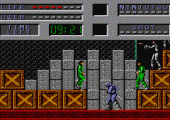
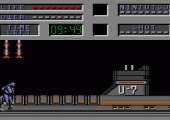
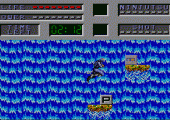
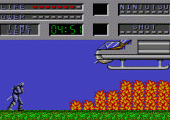
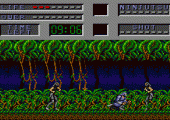
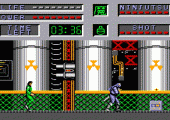
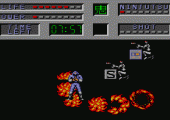
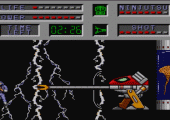
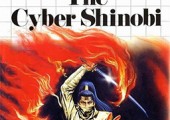
Recent Comments